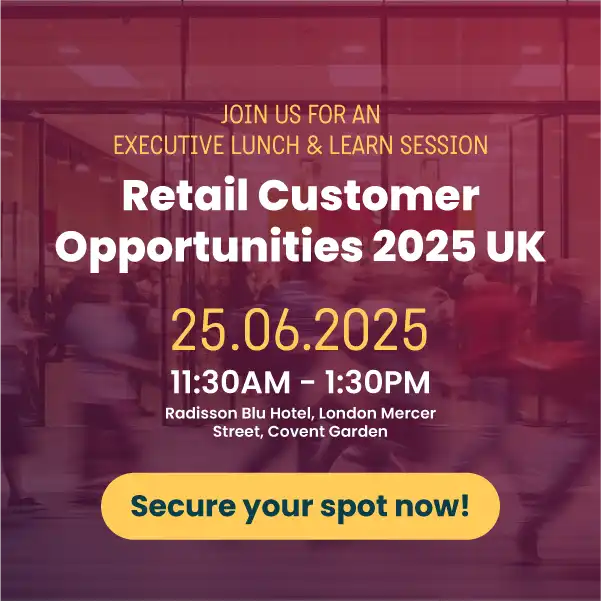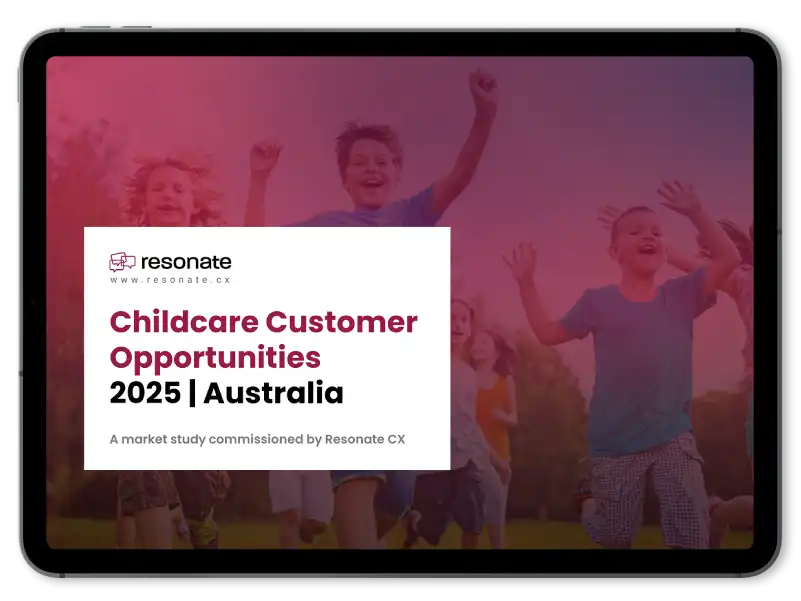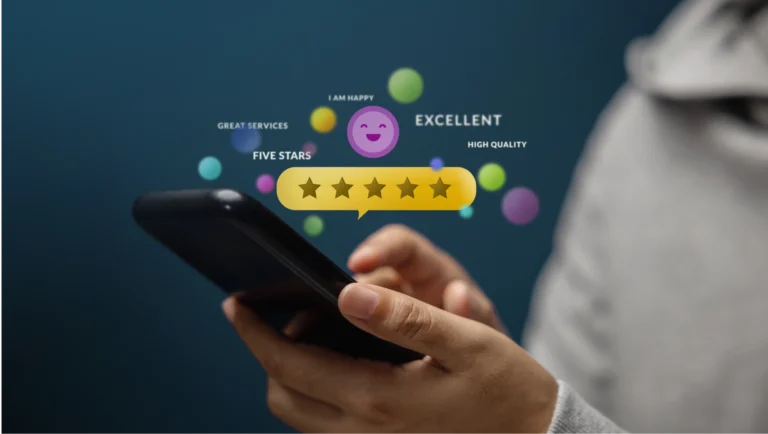Imagine your ideal workplace. It’s not just about a fancy receiving area, cool meeting rooms, or a stocked break room (although those perks are nice). It’s about feeling valued, supported, and empowered to do your best work. That, in a nutshell, is Employee Experience (EX).
What is Employee Experience?
At its core, Employee Experience encapsulates everything an employee encounters, observes, or feels over the course of their journey at an organization. From the first interaction as a potential recruit to the final goodbye, every touchpoint contributes to the overall perception and sentiment towards the employer. Think of it as the workplace equivalent of customer experience — where every micro-interaction adds up to form a larger impression.
Why Does Employee Experience Matter in Today’s Workplaces?
- Boosts Innovation, Profitability, and Customer Satisfaction
A stellar EX isn’t just about creating a ‘nice’ workplace; it’s a strategic advantage. Companies with highly engaged employees see a surge in innovation. Why? Because engaged employees are more connected to their work, leading to higher creativity levels. This engagement translates into superior service that boosts customer satisfaction and, ultimately, reflects positively on profitability. According to studies compiled from sources like Gallup and Culture Amp, companies with engaged employees outperform their peers by up to 202% financially. - Drives Down Turnover
Turnover can bleed a company dry, not just financially but also culturally. Investing in a positive employee experience reduces turnover rates significantly. When people feel valued and satisfied at work, they stick around. This retention is crucial, especially when you consider that replacing an employee can cost up to two times their annual salary. By nurturing a culture that prioritizes employee well-being, companies not only retain talent but also attract top-notch candidates.
In essence, prioritizing the Employee Experience is not just an HR function; it’s a business strategy that pays dividends in innovation, customer satisfaction, and financial performance. Companies looking to thrive in the modern workplace landscape cannot afford to overlook the critical role EX plays in achieving sustainable success.
The Building Blocks of a Stellar EX: It’s Not Just About Perk-onomics
We all know the clichés: free lunches, beanbag chairs, and the elusive “slide” between floors. But EX goes way beyond the flashy extras. It’s built on three core pillars:
- Physical:
This encompasses the nuts and bolts of your workspace – from ergonomic furniture and abundant natural light to comfortable meeting spaces and, yes, maybe even a well-stocked snack bar (we didn’t forget entirely!). But it’s also about accessibility and fostering a sense of community within the physical environment. - Cultural:
Company culture is the heart and soul of EX. It encompasses your core values, the way your leaders interact with employees, and the overall social atmosphere. Think transparent communication, opportunities for collaboration, and a sense of belonging. Feeling valued and respected by colleagues and managers goes a long way. - Technological:
This is your tech toolbox. Are you equipping your employees with the tools they need to be efficient and productive? Think user-friendly software, reliable hardware, and seamless access to information – the stuff that makes work flow, not the kind that creates frustration.
These three components work together to create a holistic EX. A well-designed workspace might be wasted if the company culture is toxic, and the best tech in the world won’t make up for a feeling of isolation. By focusing on all three, you’re building a foundation for a truly exceptional employee experience
Stages of the Employee Lifecycle: From Hello to Farewell (and Maybe Back Again)
EX isn’t a one-time event; it’s a marathon, not a sprint. To create a truly remarkable experience, you need to consider every stage of the employee lifecycle, from the very first interaction to the final goodbye (and maybe even a future “welcome back”). Here’s a breakdown of the key touchpoints:
- Recruitment: Securing the Right Talent
Recruitment is the first crucial step in the employee lifecycle, focusing on attracting and selecting candidates who not only possess the necessary skills but also align with the company’s culture and values. Strategic recruitment involves a clear understanding of the company’s needs, crafting compelling job descriptions, and utilizing effective sourcing channels. This stage sets the foundation by ensuring that the organization brings on board the right talent, equipped to contribute positively and thrive within the company’s unique environment. - Onboarding: Setting the Stage for Employee Success
Following a successful hire, the onboarding process is critical in setting new employees up for success. This stage goes beyond administrative tasks to include a thorough introduction to the company culture, key policies, and the team. Effective onboarding ensures that new hires feel welcomed, valued, and informed, providing them with the necessary tools and connections to start their journey on a strong note. This early engagement is crucial in fostering a sense of belonging and motivation, setting the tone for their future at the company. - Performance, Development, and Growth: Fueling Professional Ascent
Once the initial phase is complete, the focus shifts to nurturing the employee’s development through continuous performance management and growth opportunities. Regular feedback and career development plans are essential, allowing employees to understand their progress and how they can evolve within the company. Training programs and educational opportunities fuel their growth, ensuring that they feel challenged and engaged with their work, which in turn drives innovation and productivity. - Retention and Engagement: Cultivating a Committed Workforce
Retention and engagement are ongoing challenges that require proactive efforts. Engaged employees are more likely to stay with a company, contribute to its culture, and deliver outstanding work. This stage is about recognizing their efforts, providing meaningful work, and ensuring that the work environment supports their needs. Regular engagement surveys, open communication channels, and recognition programs are effective tools to enhance employee satisfaction and loyalty. - Exit and Offboarding: Managing Transitions with Grace
When an employee decides to leave, the exit and offboarding process should be handled with the same care as the earlier stages. A smooth transition not only respects the departing employee but also maintains a positive relationship that can lead to future re-engagement or referrals. The exit stage is also a critical point for gathering feedback on the employee experience, which can provide valuable insights into improving organizational practices. - Retirement (if applicable): Celebrating Long-Term Contributions
The final stage of the employee lifecycle, retirement, marks the culmination of an employee’s journey within the company. This stage should be a celebration of the retiree’s contributions and a testament to the company’s commitment to its employees’ long-term welfare. Preparing for this stage involves not just financial planning support but also recognizing the retiring employee’s impact on the company, ensuring they leave with a lasting positive impression.
Each stage of the employee lifecycle offers unique opportunities to enhance the Employee Experience, creating a cycle of engagement that benefits both the employee and the organization throughout their journey together. By strategically managing each stage, companies can build a resilient, committed workforce poised for success in the competitive business environment.
Factors Influencing Employee Experience
- Company Culture: The Soul of the Organization
Company culture is the backbone of the employee experience, influencing how employees feel about their work and their workplace. A strong, positive company culture fosters an environment where employees feel connected to the organization’s mission and values. It shapes interactions, informs decision-making processes, and defines the social norms within the workplace. Cultures that promote transparency, inclusivity, and collaboration not only attract top talent but also enhance employee satisfaction and retention.
Related: At Resonate, we’re proud that 56% of our workforce are women. - Impact of Leadership and Management: Steering the Ship
Leadership and management play pivotal roles in shaping the Employee Experience. Effective leaders are not just administrators; they are visionaries who motivate, guide, and support their teams. The way leaders communicate goals, provide feedback, and empower employees significantly impacts organizational morale and employee engagement. Leadership that is approachable and responsive to employee needs fosters a culture of trust and respect, which is essential for a positive workplace environment.
Related: Resonate CEO awarded Executive of the Year by Entrepreneurs’ Organization - Role of Feedback and Communication: The Lifelines of Engagement
Feedback and communication are the lifelines that sustain employee engagement and organizational growth. Open and continuous communication ensures that employees are well-informed, aligned with the organization’s objectives, and feel heard. Regular feedback, both positive and constructive, helps employees understand their performance and areas for improvement, fostering a culture of continuous learning and adaptation. - Importance of Career Development Opportunities: Pathways to Growth
Career development opportunities are crucial for motivating employees and enhancing their job satisfaction. When organizations invest in the growth of their employees through training, education, and clear career pathways, they not only improve their workforce’s capabilities but also increase loyalty and engagement. Employees who see a clear future for themselves within the company are more likely to stay and contribute to its success. - Work-life Balance and Well-being: Essential for Sustainable Performance
Work-life balance and well-being are increasingly recognized as essential components of the Employee Experience. Organizations that prioritize these aspects help ensure their employees are not overburdened, reducing burnout and promoting overall health. Flexible working hours, remote work options, and support for mental health are practices that contribute to a healthier work-life balance, leading to more productive and satisfied employees. - Effects of Recognition and Rewards: Fueling Motivation and Appreciation
Recognition and rewards are powerful tools that reinforce desired behaviors and acknowledge employee efforts. Effective recognition programs are timely, frequent, and aligned with the company’s values. Whether through formal awards, performance bonuses, or informal acknowledgments, recognizing employees’ contributions boosts morale and motivates others to excel. Rewards that are thoughtful and meaningful enhance employees’ emotional and professional ties to the organization, driving engagement and loyalty.
Each of these factors plays a significant role in crafting an exceptional Employee Experience. By strategically addressing these areas, organizations can create a supportive, engaging, and productive workplace where employees thrive and contribute to the company’s overarching goals.
Strategies for Improving Employee Experience
- Leveraging Technology to Enhance Connectivity and Efficiency
In the digital age, technology is a crucial enabler of enhanced connectivity and efficiency across organizations. By integrating advanced tools and platforms—ranging from communication software to project management apps—companies can facilitate smoother interactions and workflows, even in remote or hybrid settings. This not only boosts productivity but also improves the overall employee experience by reducing frustrations associated with inefficient processes. - Creating Surveys to Gather Feedback from Employees
Surveys are a foundational strategy for understanding the needs and concerns of employees. Well-crafted surveys can provide invaluable insights into the aspects of work life that matter most to employees. Regularly deploying these tools, including pulse surveys, satisfaction surveys, and custom feedback forms, helps organizations stay connected with their workforce’s evolving expectations and experiences. - Taking Steps to Measure Employee Experience
Measuring employee experience is crucial for assessing the impact of workplace initiatives and identifying areas for improvement. Implementing a structured approach to collecting and analyzing data through the use of KPIs and analytics enables organizations to track changes over time, measure the effectiveness of interventions, and make informed decisions that contribute to a better workplace. - Focusing on Inclusive Leadership
Inclusive leadership is key to fostering a culture where all employees feel valued and included. Leaders who actively seek out and consider diverse perspectives and who are committed to equity in the workplace can drive significant improvements in employee experience. Training programs and leadership development initiatives that emphasize inclusivity can help equip leaders with the skills needed to support a diverse workforce. - Providing Support for Well-Being and Work-Life Balance
Supporting employee well-being and promoting a healthy work-life balance are essential for a positive employee experience. This might include flexible working arrangements, mental health resources, wellness programs, and family-friendly policies. By prioritizing the well-being of employees, companies can not only improve engagement and satisfaction but also enhance overall productivity and retention. - Focusing on the Stages of the Employee Life Cycle
Each stage of the employee life cycle offers unique opportunities to positively impact the employee experience. From recruitment and onboarding to development, retention, and even offboarding, ensuring that each phase is handled with care and consideration can greatly improve how employees perceive and engage with their employer. - Designing a People-First Culture
Creating a people-first culture involves putting the needs and well-being of employees at the forefront of business decisions. This strategy is about more than just offering benefits; it’s about embedding a genuine care for employees into the fabric of the organization’s values and practices. A people-first approach can lead to higher job satisfaction, loyalty, and advocacy from employees. - Best Practices for EX from Leading Organizations
Learning from leading organizations that excel in managing employee experience can provide valuable lessons and benchmarks. These companies often share common practices such as transparency in communication, comprehensive support for employee development, and robust recognition programs. Adapting these best practices to fit the unique context of one’s own organization can lead to substantial improvements in EX.
By employing these strategies, organizations can craft an exceptional employee experience that not only attracts top talent but also fosters a motivated, productive, and satisfied workforce.
Challenges in Enhancing Employee Experience
- Adapting to Remote or Hybrid Work Models: Navigating New Normals
The shift towards remote and hybrid work models has introduced significant challenges in maintaining a cohesive employee experience. Adapting to these models means not only equipping employees with the necessary tools and technology but also redefining communication and collaboration practices. Organizations must foster a sense of community and connection despite physical distances, ensuring all employees feel integrated and engaged. This requires innovative approaches to virtual team building and maintaining an organizational culture that transcends physical office spaces.
Related: Employee Experience in the New Normal - Maintaining Engagement During Economic or Organizational Changes: Keeping the Ship Steady
Economic downturns and organizational changes can create uncertainty and disrupt employee engagement. During such times, transparent communication becomes even more crucial. Companies must find ways to maintain morale and motivation when external pressures might be demotivating. This involves clear, consistent communication about the company’s status and future plans, as well as support systems to help employees navigate these changes. Keeping employees engaged during turbulent times is critical for continuity and long-term success. - Addressing Diversity, Equity, and Inclusion (DEI): Building a Truly Inclusive Workplace
Enhancing diversity, equity, and inclusion within the workplace is both a challenge and a necessity. While many companies commit to DEI initiatives, truly embedding these values into the corporate culture requires ongoing effort and genuine commitment. Challenges include overcoming unconscious biases, ensuring equitable treatment and opportunities for all employees, and creating an environment where diverse perspectives are valued and celebrated. Success in this area not only enhances the employee experience but also drives innovation and opens the organization to a broader range of ideas and solutions.
Each of these challenges requires thoughtful strategies and dedicated resources to ensure that efforts to enhance the employee experience are successful. By proactively addressing these areas, organizations can build a resilient and inclusive culture that supports all employees, regardless of their location, role, or background.
Measuring Employee Experience
- Types of Surveys and Feedback Mechanisms: Capturing Employee Voices
Effective measurement of the employee experience begins with capturing direct feedback from the workforce. Surveys remain a cornerstone in this effort, allowing companies to gather insights into employee satisfaction, engagement, and areas needing improvement. Annual engagement surveys, pulse surveys, and exit interviews are common tools that provide ongoing snapshots of the employee sentiment. These instruments help organizations to understand the impact of current policies and practices and identify what changes are necessary to enhance the overall experience. - Role of Analytics and Data in Understanding EX: The Power of Information
Beyond traditional feedback mechanisms, advanced analytics and data play a crucial role in decoding the complexities of employee experience. Leveraging data from various sources, including HR systems, performance metrics, and social media platforms, allows companies to create a more comprehensive view of their employee landscape. Analytics can highlight trends, predict turnover rates, and even identify the drivers of employee engagement that are not immediately obvious. This data-driven approach enables more strategic decisions and targeted interventions to improve areas critical to employee satisfaction and retention. - Key Performance Indicators (KPIs) Related to EX: Tracking Success
Identifying and monitoring key performance indicators (KPIs) related to employee experience is essential for assessing the effectiveness of EX initiatives. Common KPIs include employee net promoter score (eNPS), turnover rates, retention rates, and absenteeism rates. These indicators help organizations track progress over time, benchmark performance against industry standards, and understand the return on investment in EX-related programs. By aligning these KPIs with business outcomes, companies can demonstrate the tangible benefits of investing in a superior employee experience.
Through a combination of surveys, data analytics, and KPIs, organizations can gain a deep understanding of their employee experience. This insight is crucial for continuous improvement and ensuring that the workplace remains responsive to the needs of its employees, ultimately leading to higher productivity, satisfaction, and business success.
Walking the Walk: EX in Action
EX isn’t just theory. Let’s take a look at some real-world examples of companies winning at employee experience.
Examples of Companies with Outstanding EX
- Zappos: This online shoe retailer is legendary for its focus on company culture and employee happiness. They famously offer a generous new-hire bootcamp that goes beyond just product knowledge, and instead focuses on company values and fostering a sense of belonging. This investment in onboarding sets the tone for a positive EX throughout an employee’s journey at Zappos.
Related: Explore Zappos culture & the employee experience! - Salesforce: This cloud-based software giant is known for its commitment to employee well-being. They offer a wide range of programs and resources to support their workforce, including on-site fitness centers, generous parental leave policies, and mental health resources. By prioritizing employee well-being, Salesforce is creating an environment where employees feel valued and supported, both inside and outside of work.
Related: How Salesforce Builds Meaningful Employee Experience
Lessons Learned from the Leaders
By studying the EX success stories of others, we can glean valuable insights:
- There’s no magic formula. The best EX strategies are tailored to the unique culture and needs of your organization.
- Small gestures can have a big impact. It’s not just about the big-ticket perks. Simple things like offering flexible work arrangements or recognizing employee birthdays can go a long way in boosting morale.
- Communication is king (or queen). Regular, transparent communication is essential for building trust and keeping employees engaged.
- EX is an ongoing journey. It’s not a one-time fix. Continuously gather feedback, measure your progress, and adapt your strategies to ensure you’re creating a truly exceptional experience for your employees.
The EX Equation: Putting It All Together
So, what have we learned about the wonderful world of Employee Experience? Here’s a quick recap.
EX key points
- EX is the sum of all the interactions, moments, and perceptions that shape an employee’s journey at your company. It’s about how valued, equipped, and empowered they feel.
- A stellar EX is built on a strong foundation that includes the physical work environment, a positive company culture, and the right technological tools.
- The employee experience unfolds across a lifecycle, from onboarding new hires to supporting those nearing retirement. Tailoring your approach to each stage is key.
- EX isn’t magic. It’s a strategic effort that requires ongoing measurement, feedback, and adaptation. But the rewards are plentiful – a happy, engaged, and productive workforce.
A Glimpse into the Future of EX
The world of work is constantly evolving, and EX is no exception. Here are some trends to keep on your radar:
- The Rise of the Human Experience (HX): We’re moving beyond just EX to encompass the entire human experience at work. This includes a focus on emotional well-being, purpose, and belonging.
- The Impact of AI: Artificial intelligence will play a growing role in EX, automating tasks, personalizing learning and development, and providing real-time feedback and support.
- The Evolving Hybrid Workplace: As hybrid and remote work models become the norm, companies will need to find innovative ways to foster connection, collaboration, and a sense of community among a geographically dispersed workforce.
By staying ahead of these trends and focusing on creating a truly exceptional experience for your employees, you’ll be well on your way to building a thriving and successful organization.








